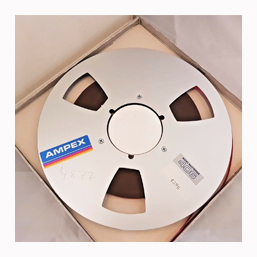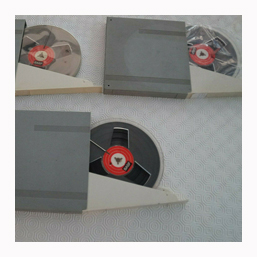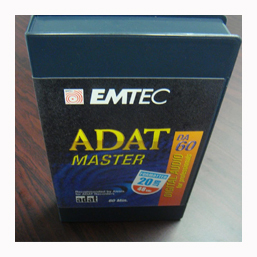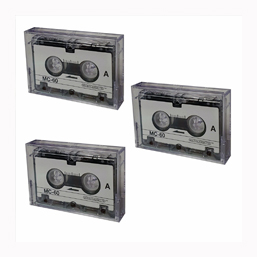We are currently working on a large order of Ampex 1/4" audio reels for a British national museum organisation, supporting their archives with tape baking and professional digitisation of their records.
standard cassettes | micro cassettes | 8-tracks | vinyl records | 1/4" reel to reel | cd ripping | 1/4" pro reel to reel | dat audio tape
Our extensive and professional Audio Video department offers audio tape transfers in Oxfordshire, London, UK and Europe. Based in Kidlington, just outside Oxford we can support our clients with orders from 1 tape to 1000’s.
We convert all
formats of audio tape into digital formats at the highest quality possible,
offering .wav or .aiff files format at 44.1, 48, 96, or 192kHz at 16 or 24 bit.
These .wav or .aiff files can then be played on any modern PC or Mac, and then be
converted to mp3 or flac, or used for a remastering project. We can also write
2 track tapes to CD-R.
We can record your 1/2" (half inch) 2 track, 4 track, 8
track, or 16 track analogue reel-to-reel tapes to multiple digital audio files.
This will allow you to digitally remix the tracks in a modern-day PC based
digital audio workstations like Pro Tools, Cubase, Nuendo, Logic Pro X, Garage
Band, or Reaper.
1/2" is still in use by many engineers around the world
today but digitising allows for safekeeping, and editing and mixing digitally.
This is also critical to preserve the recordings since magnetic tape has a
finite lifespan. We also provide tape baking services for older unstable
tapes. Contact us now for a quote and directions on sending us your tapes.
cheryl@oxfordduplicationcentre.com 01865 457000
Tape Decay
We also provide tape baking services that may be required
for the transfer of older, unstable tapes. Many 1/4" tapes, mostly AMPEX/Quantegy and fewer formulas of 3M/SCOTCH
are unfortunately prone to "sticky shed" syndrome, due to the
breakdown of the binder (glue) holding the oxide particles on the tape.
We have perfected the process of treating and rescuing these
tapes (even those suffering from severe sticky shed). Let our team of seasoned
engineers handle the delicate process of saving your recordings, giving them an
infinite lifespan in the digital domain.
Audio Tapes We Convert
·
· 1/4-inch 2 Track Tape
·
1/2-inch 4 Track, 8 Track and 16 Track Tape
·
1 inch 16 Track and 24 Track Tape
· 1/4-inch 4 Track Tape
Other formats we convert are:
ADAT, DAT, Vinyl, Acetates/Dubplates and all
formats of Cassette tapes for mastering and multiple .WAV or .AIFF for multi-track
digital mixing in modern DAWs.
Kind
regards
Cheryl
Director
Oxford
Duplication Centre
Corporate,
Consumer and Heritage Digitisation
29
Banbury Road
Kidlington
Oxfordshire
OX5 1AQ
Tel:
01865 457000
Current
opening hours: Monday to Thursday 10-3pm by appointment only
www.oxfordduplicationcentre.com







Comments
Post a Comment